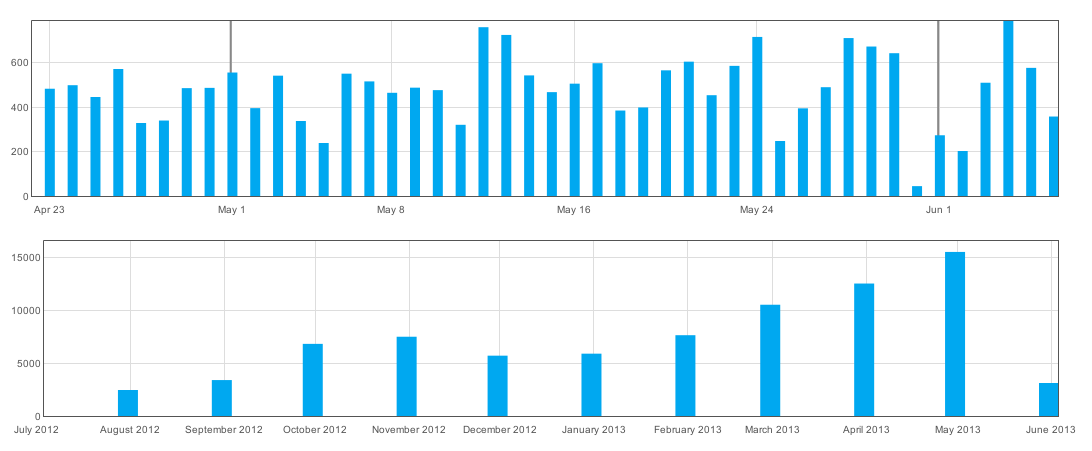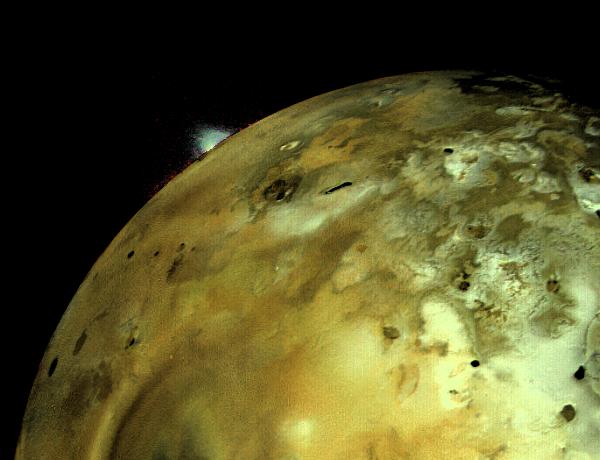Voyager
When I was in elementary school, I discovered a series of books in the library that detailed, in glorious full page color, photos of the outer solar system as captured by Voyager 1 and Voyager 2 on their epic journeys to places never before explored by humanity. I was so stunned and enthralled at the thoughts of visiting those distant worlds; it indeed captured my imagination, and continues to inspire me even now, two decades after I first learned of their amazing quests.
I’ve spent countless hours dreaming of visiting the planets and stars of our universe: in games like Wing Commander, Freespace, Freelancer, Mass Effect, and X3, exploring fictional galaxies, and in Orbiter Sim, recreating my own journeys to the planets and moons of our own solar system. I can’t wait for Star Citizen and X Rebirth to give me further ways to escape the confines of Earth and experience worlds that I will never be able to visit otherwise.
And I have NASA to thank for inspiring so many of these wonderful outlets, from the Mercury, Gemini, and Apollo projects that took us to the Moon, the Voyager missions for showing us just how beautiful our own back yard really is, to the Mars rovers for exploring our closest neighbor, and to future NASA missions like New Horizons that are leading the way towards understanding our tiny place in this vast universe.
Today, it was finally confirmed that Voyager 1 has indeed crossed the boundary of the heliosphere and forever left our solar system behind.
Wow.
I simply find it incredible that not only is Voyager still working after four decades of exceptional service, but that it’s still capable of aiming its antennas at Earth, sending a coherent signal using only 23W of power, and actually sending useful data back to us. That alone is a hugely amazing achievement, and I think everyone at NASA should be eternally proud of their accomplishment. The fact that we now have even more data points regarding the boundaries of our solar system is just pure icing on top of that cake, and I congratulate everyone involved in the project.
If you asked me what my favorite spacecraft is, fictional or not, it wouldn’t be the Enterprise, the Millenium Falcon, the Normandy, or even the Apollo rockets; it would be Voyager. And it will forever hold a special place in my heart.
So thank you, NASA. Thank you.
Android is Better →
Paul Stamatiou, on falling in love with Android:
I set out to write an article about how I feel Android provides unique affordances that create a unique cohesive mobile experience (more on that below) rather than talking openness, features and apps. However, the more time I spent living with Android it became obvious that being able to do anything and suit a variety of needs is a pillar of the Android experience.
<!>
I was trying to find out why Android felt so remarkably different to use, beyond aesthetics. I found there are a few pieces that help contribute to this magical user experience: the global back button, intents and Google Now.
<!>
Delight. It’s what designers strive to produce in the experiences they craft. Google Now has hit the nail on the head. I can’t even count the number of times friends have pulled out their phone to show me the smart things Google Now did for them.
Using Android feels like one fluid experience.
And it just keeps getting better and better!
Say "Yes" to JavaScript →
Armin Ronacher, on Firefox’s removal of the option to disable Javascript:
My immediate response to change of removing the switch was: “Thank god, that should have happened ages ago”.
…
You don’t get extra privacy by disabling JavaScript. I can fully track you even without JavaScript. At the same time I can enhance your browser experience through better written JavaScript code that allows me to do things with your browser that plain HTML does not allow.
If you’re really paranoid about your privacy, use Firefox, enable the Do Not Track flag in your options, enable click to play for plugins like Flash or Silverlight, and install the Ghostery and Adblock extensions. Anything else is just going to break the web at your own expense.
What Microsoft Should Have Done →
Soren Johnson, lead designer of Civilization 4:
The answer is to make digital games so attractive that players will abandon physical discs on their own. (One might call this the Steam strategy.) Microsoft could have avoided this whole fiasco by maintaining the old disc-based ecosystem while softly undermining it with three moves that create an alternate digital future.
Combined, these three changes would destroy the traditional retail market. The $40 price would make digital games cheaper at release; the ongoing heavy sales would undercut the used games market; and persistence would make digital games easier to maintain across multiple devices. Microsoft needs to make buying games digitally a better deal for the consumer than buying them physically.
I was extremely disappointed to hear Microsoft cave in to rabid demands to maintain the status quo. I was really looking forward to their plans for combined physical and digital ownership, where I could get all the benefits of buying physical copies, including special and collectors’ editions of my favorite titles, while simultaneously retaining all the benefits of a digital copy, like the ability to forego disc-swapping.
How long will we have to wait for consoles to catch up with Steam?
Push Push Push
One of my favorite projects that I’ve created has to be ZNC Push, a plugin for ZNC that generates push notifications for IRC highlights and private messages. It supports a wide array of push services for all of the major mobile platforms, and gives the user deep flexibility in choosing how and when to trigger these notifications.
However, I have very little insight into usage statistics for the plugin. Pushover is the only service that gives me gross usage data, but considering ZNC Push supports six other networks as well as custom push URLs, this only represents an unknown portion of the total usage. But I will continue to draw baseless conclusions from it regardless! Do note that I can’t see anything more than raw volume of notifications; I do not have access to who is sending/receiving these, nor the contents of those messages.
So without further ado, some pretty graphs straight from the Pushover dashboard:

ZNC Push reached a milestone of sending 15,000 push notifications in May through the Pushover service!
Push volume has been growing steadily since Pushover support was added, with a small dip in December and January that is likely attributeable to the holidays for most users. May marked the second occasion that ZNC Push has exceeded the volume “cap”, and Pushover has again graciously increased that in support of this open source project. At this sort of grawth rate, I would expect the next volume cap (25,000/mo) will be reached by October at the latest. I’m excited to see such growth for a small side project with such a niche use case.
Sometimes, it’s amazing to stop and realize just how far this project has come. What started in January of 2011 as a basic module for the Notifo push service, has blossomed into a mature system supporting multiple push services and far more customization options than I had ever envisioned from the beginning. Knowing that it’s being used by so many people, and helping them stay more connected with their online communities, makes me a very happy engineer.
Many thanks to Pushover for granting such a large volume of free notifications to ZNC Push. If you’re not already using them for your push service of choice, I highly recommend them. They have apps for both Android and iPhone, and they continue to improve them and add new features over time.
And as always, my eternal appreciation to everyone who has contributed time and energy to helping me improve the module over the past two and a half years! The project wouldn’t be where it is today without your support.
Favorite Android Apps of 2012
Eighteen months ago, I wrote an article about my Favorite Android Apps, but a lot has changed with Android and its app ecosystem since then. Developers have started putting more focus on design and usability when creating apps, and of course newer apps have come along that I have come to rely upon. I myself have upgraded to newer devices, with a Nexus 7 replacing my Galaxy Tab 10.1, and a Galaxy Nexus from work has sadly replaced my beloved but aging Nexus S. So what follows are some of my favorite new apps from 2012, and some follow-up on what my previous favorite apps look like in modern attire. All screenshots are taken from devices running Android 4.2.1 (CM 10.1 nightlies).
Why Ralf Prefers Android →
Along a similar vein as my previous post on Why I Prefer Android, Ralf Rottmann, a self-described “Apple fanboy”, has described why I prefer Android better than I could in my own words:
The latest version of Android outshines the latest version of iOS in almost every single aspect. I find it to be better in terms of the performance, smoothness of the rendering engine, cross-app and OS level integration, innovation across the board, look & feel customizability and variety of the available apps.
On the topic of app and system integration:
Another great example: Sharing stuff on social networks. On iOS, I have to rely on the developers again. Flipboard, as one of the better examples, gives me the ability to directly share with Google+, Twitter and Facebook. On my Nexus 4, I have 20+ options. That is, because every app I install can register as a sharing provider. It’s a core feature of the Android operating system.
…
All of this is entirely impossible on iOS today. I’ve stopped counting how often I felt annoyed because I clicked a link to a location in Mobile Safari and would have loved the Google Maps app to launch. Instead, Apple’s own Maps app is hardcoded into the system. And there’s no way for me to change it.
Regarding possibilities for app developers:
On iOS, many things I always wished to see being developed, simply cannot be done because of the strict sandbox Apple enforces around apps.
…
I also have apps [on Android] that give me great insight into the use of mobile data across the device and all apps. Or the battery consumption. Or which apps talk home and how frequently.
None of it is available for iOS. And possibly won’t be at any time in the near future.
And summing up the way I’ve felt for a long time when using iOS devices:
… whenever I grab my iPhone for testing purposes, iOS feels pretty old, outdated and less user friendly. For me, there currently is no way of going back. Once you get used to all of these capabilities, it’s hard to live without them.
There are many things Apple got right with iOS, like making a consistent user experience, and encouraging users to spend money in the market for quality apps. But when they place so many restrictions and limitations on how you can use your phone, and what your software is allowed to do on your own device, I gladly give up those things that make iOS so great for the freedom to run apps that can do what I want — and expect — from a modern computing device.


